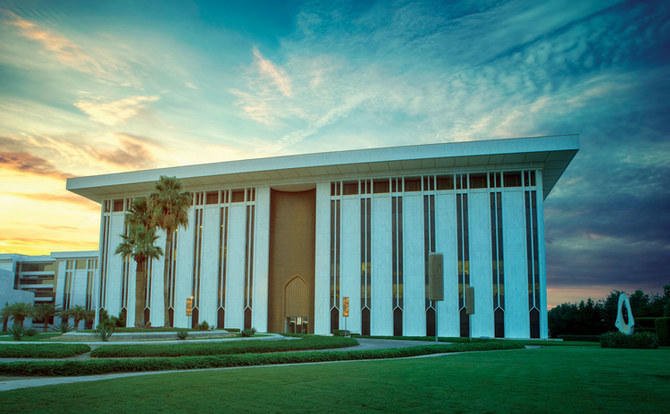RIYADH: The monthly statistical report produced by the Saudi Central Bank (SAMA) revealed a decrease in SAMA bills and repurchase agreements.
This is a good sign according to Mohamad Ramady, an independent London-based economist, who said: “It means that the banks are investing more outside [of SAMA], instead of placing their surplus deposits overnight with SAMA, and SAMA is not also borrowing more from the banks, crowding out the private sector.”
Concerning SAMA’s reserve assets, the special drawing rights (SDRs) underwent a remarkable rise, growing by over 160 percent this month. This reflects Saudi Arabia’s “fairly sizable contribution” to help other third-party countries.
SAMA data also showed changes in the monetary survey, which is the aggregate balance sheet of all deposit-taking institutions and SAMA.
It revealed that commercial banks’ net foreign assets increased by 8.16 percent to reach SR58.43 bn in August.
Bank claims on government experienced an increase as well by SR10.74 bn to reach SR465.32 bn in August, reflecting a 2.36 percent growth rate.
Moreover, bank claims on nonfinancial public sector enterprises increased by 5.25 percent, moving from SR88.43 bn in July to SR93.07 in August. This is contrasted by the very slight increase in bank claims on the private sector, amounting to a mere 0.56 percent growth rate.
Ramady noted that “these shifts in lending patterns can be explained by the Saudi commercial banks’ interest in new governmental projects, including projects by The Red Sea Development Company (TRSDC) and NEOM.”
In addition, data released by SAMA showed a drop in both demand deposits and currency outside banks by SR5.33 billion and SR4.03 billion, respectively, for the month of August. This was accompanied by a noticeable rise in time & savings deposits, experiencing an increase of over SR10 billion and growing by 2.33 percent.
This reflects a change in people’s preferences during the period whereby they prefer higher interest-earning deposits over currency and low-earning time deposits, Ramady remarked. He also added that this increase in deposits was used to lend the government sector.
While the central bank’s total asset structure has not changed greatly, the biggest change was in the Bank’s deposits with banks abroad where it grew by SR19.78 billion. The reason for that is that it is a more liquid and a higher-earning option compared to others, Ramady indicated.
The data also revealed that the government current account deposits and reserves with SAMA have decreased considerably by about 18 percent, reaching SR69.72 billion in August. This means that the government institutions are drawing down from their current accounts as the pace of project start-ups and completion accelerates.
However, the governmental institutions deposits with the central bank increased by about SR30 billion. Ramady explained that this could be due to the fact that they are earning more revenues as the effects of the pandemic start to ease off, adding that “it could be because of increases in zakat, income tax and VAT revenue.”
SAMA gives more time to small firms to pay back loans Saudi banks’ claims on the private sector see a $2.9bn rise in August: SAMA data shows

